When learning to describe a person in Spanish, it’s important to understand the verbs that are commonly used, such as “ser” (to be), “estar” (to be), “tener” (to have), and “gustar” (to like). These verbs are used to express physical appearance, personality traits, and preferences. Adjectives must agree in gender and number with the noun being described. For example, “alto/a” (tall) and “bajo/a” (short) are used to describe height, while “amable” (friendly) and “callado/a” (quiet) are used to describe personality traits.
To begin with, the verbs that we’re usually going to use in descriptions of people are: “ser”, “estar”, “tener” and “parecer”. If we want to talk in terms of personality, we can also use the verb “gustar” (to like), which works peculiarly in Spanish. Don’t worry, though! We’ll go through all that together!
Key Takeaways:
- Understanding the verbs “ser,” “estar,” “tener,” and “gustar” is crucial for describing a person in Spanish.
- Adjectives must agree in gender and number with the noun being described.
- “Ser” is used for permanent characteristics, while “estar” is used for temporary states.
- Vocabulary for describing physical appearance, personality traits, and emotions is essential.
- Practicing with activities like writing descriptions and watching Spanish-language media can improve language skills.
Let’s start by describing someone in terms of physical appearance:
The verbs we’re mostly going to use in this case are “ser” and “tener”.
We are going to use “ser” plus and adjective. For instance…
SER + …
- Alto/a = tall
- Bajo/a = short
- Grande = big
- Chico/a = small
- Gordo/a = fat
- Flaco/a = thin
- Lindo/a = pretty
- Feo/a = ugly
- Rubio/a = blond
- Castaño/a = brunette
- Pelirrojo/a = redhaired
- Moreno/a = dark
- Pálido = pale
- Fuerte = strong
- Débil = weak
- Joven = young
- Viejo/a = old
- Narizón = big nose
- Pecoso = freckled
- Elegante = fancy
- Desprolijo = sloppy
Tip: don’t forget that, in Spanish, adjectives must match the noun in gender and number!
For example, La chica es alta (The girl is tall) / El chico es alto (The boy is tall) / Los chicos son altos (The boys are tall) / Las chicas son altas (The girls are tall).
We can also use the verb “tener”, which is going to be followed sometimes by an article (el, la, los, las, un, una, unos, unas), a noun and an adjective for the noun!
TENER + (ARTICLE) + NOUN + ADJECTIVE
TENER + …
1) Los ojos… (Eyes)
- oscuros = dark
- claros = light
- marrones = brown
- azules = blue
- verdes = green
- grises = grey
- grandes = big
- pequeños = small
- redondos = round
- almendrados = almond

How about some Spanish Classes with a live teacher? Check our different options:
- Spanish School in Madrid
- Spanish School in Valencia
- Spanish School in Barcelona
- Spanish School in Argentina
- Spanish School in Sacramento
- Spanish School in Toronto
- Spanish School in Santiago Chile
- Spanish School in Lima Peru
- Learn Spanish Online
- Clases de ingles en Madrid
- Clases de ingles en Barcelona
- Clases de ingles en Montevideo
2) El pelo… (Hair)
- castaño = brown
- negro = black
- rubio = blond
- pelirrojo = red
- largo = long
- corto = short
- rizado = curly
- lacio = straight
- blanco = white
Basically, we can add any part of the face or body to the verb “tener” and then use and adjective to qualify it!
For example,
- Juan tiene el pelo negro = Juan has black hair = Juan’s hair is black.
- Juan tiene la nariz grande = Juan has a big nose = Juan’s nose is big.
- Juan tiene la piel pálida = Juan has pale skin = Juan’s skin is pale.
- Juan tiene los ojos pequeños = Juan has small eyes = Juan’s eyes are small.
Remember, the adjective MUST match the noun in both gender and number!
What about someone’s personality?
Now, we can also use the verb “ser” plus an adjective to describe someone’s personality:
For example…
SER + …
- trabajador/a = hard-working
- vago/a = lazy
- callado/a = quiet
- hablador/a = talkative
- generoso/a = generous
- egoísta = selfish
- paciente = pacient
- impaciente = impacient
- extrovertido/a = extroverted
- introvertido/a = introverted
- tímido/a = shy
- abierto/a = open-minded
- cerrado/a = closed-minded
- simpático/a = nice, friendly
- antipático/a = unfriendly
- serio/a = serious
- alegre = joyful
- culto/a = well-read
- inteligente = smart
- honesto/a = honest
However, we can also use the verb “gustar” (to like). Now, this verb is special in Spanish. Many students believe it should be obviously conjugated as the rest of the verbs, and therefore do this:
“Juan gusta el helado” = Juan likes ice-cream (WRONG!).
The correct way should be…
A Juan le gusta el helado = Juan likes ice-cream (Correct!).
Now, the general structure for this verb is:
A + SUBJECT + (me/te/le/nos/les) + the thing they like
For instance…
A Juan le gusta leer = Juan likes reading.
A Juan le gustan las ciudades grandes = Juan likes big cities.
Next, let’s try to describe ourselves using this vocabulary. Remember, whether you are male, female or non binary, this must be reflected in the adjectives!
Let’s read Verónica’s description of herself:
Soy baja, pálida y linda. Tengo el pelo negro y largo y los ojos verdes. Me gusta tocar el arpa y también me gustan mucho los gatos, pero no me gusta comer carne.
I’m short, pale and pretty. I have black hair and green eyes. I like playing the harp and I also like cats very much, but I don’t like eating meat.
Now let’s read Verónica’s description of her friend Fernando:
Fernando es alto, rubio y pecoso. Tiene anteojos y ojos marrones. Es muy inteligente, honesto y generoso. Le gustan los días de verano y el rock and roll.
Fernando is tall, blond and freckled. He wears glasses and has brown eyes. He’s very smart, honest and generous. He likes summer days and rock and roll.
(Note: The image should be placed visually appealing and relevant to the topic of the blog post, centered in the content.)
Continue your Spanish learning journey with Vamos Academy and master the art of describing people in Spanish.
(Including a call to action to encourage readers to engage with Vamos Academy’s Spanish learning programs.)
Verbs to Describe Physical Appearance
When learning to describe a person in Spanish, it is important to have a good understanding of the verbs used to describe physical appearance. Two commonly used verbs for this purpose are “ser” (to be) and “tener” (to have).
For example, to describe someone’s height, you can use the verb “ser” followed by an adjective. So, if you want to say that someone is tall, you can say “Él es alto” (He is tall) or “Ella es alta” (She is tall). Similarly, to describe someone’s hair color, you can use the verb “tener” followed by a noun and an adjective. For example, “Él tiene el pelo castaño” (He has brown hair) or “Ella tiene el pelo rubio” (She has blonde hair).
It is important to note that adjectives must agree in gender and number with the noun they modify. This means that if you are describing a feminine noun, you need to use the feminine form of the adjective, and if you are describing a plural noun, you need to use the plural form of the adjective.
| Physical Appearance | Adjective | Example Sentence |
|---|---|---|
| Height | Alto/a | Él es alto. (He is tall.) |
| Hair Color | Rubio/a | Ella tiene el pelo rubio. (She has blonde hair.) |
| Eye Color | Azul | Él tiene los ojos azules. (He has blue eyes.) |
| Facial Features | Bigote | Él tiene bigote. (He has a mustache.) |
By using these verbs and adjectives, you will be able to effectively describe physical appearance in Spanish.
Verbs to Describe Personality
When it comes to describing a person’s personality in Spanish, there are several verbs that are commonly used. These verbs help us express different traits and characteristics that define someone’s personality. Two of the most commonly used verbs are “ser” and “gustar”.
With the verb “ser”, we can describe permanent personality traits. For example, we can use adjectives like “trabajador/a” (hard-working), “amable” (kind), or “tímido/a” (shy) to describe someone’s personality. For instance, we can say “Él es trabajador” (He is hard-working) or “Ella es amable” (She is kind).
On the other hand, the verb “gustar” is used to express likes and dislikes. We can use it to describe someone’s preferences and interests. For example, we can say “A Juan le gusta leer” (Juan likes to read) or “A María le gustan los perros” (María likes dogs). This verb helps us to understand what someone enjoys doing or what they are passionate about.
Using adjectives with the verb “ser”
When using adjectives to describe personality traits with the verb “ser”, it’s important to remember that adjectives must agree in gender and number with the noun being described. For example, if we are describing a male, we would use the masculine form of the adjective, such as “trabajador”. If we are describing a group of people, we would use the plural form of the adjective, such as “trabajadores”. This ensures that the description is accurate and grammatically correct.
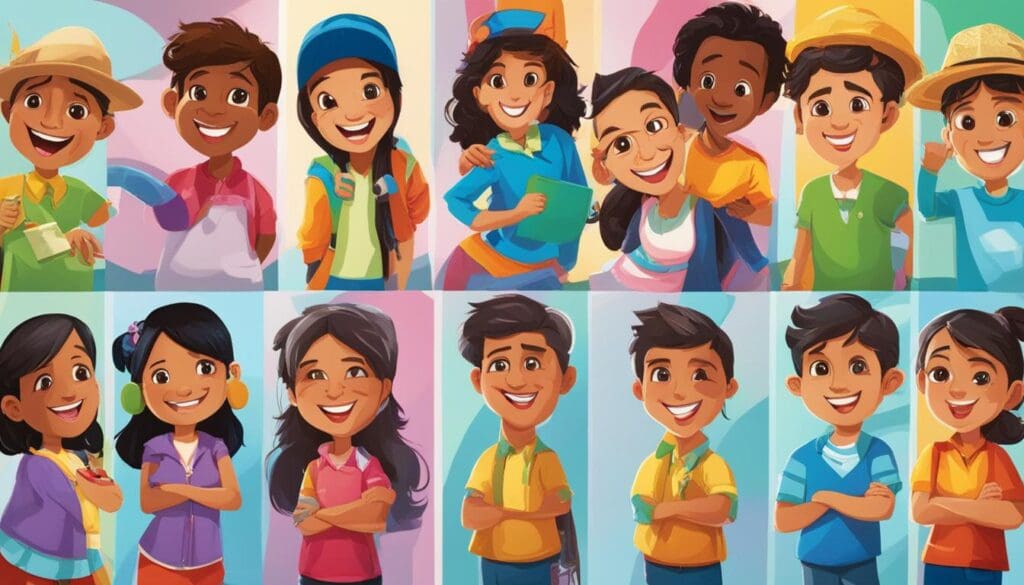
Overall, by using verbs like “ser” and “gustar” along with appropriate adjectives, you can effectively describe someone’s personality in Spanish. Whether you want to talk about someone’s personality traits or their likes and dislikes, these verbs provide the foundation for expressing these aspects of a person’s character.
Describing Emotions in Spanish
When it comes to describing a person’s emotions in Spanish, there are several adjectives that can be used to capture different emotional states. Whether someone is feeling happy, sad, or nervous, these adjectives can help convey their feelings effectively. Here are some commonly used adjectives to describe emotions in Spanish:
- Alegre – Happy
- Triste – Sad
- Nervioso/a – Nervous
- Enfadado/a – Angry
- Miedo – Scared
- Emocionado/a – Excited
These adjectives can be combined with the verb “estar” to express temporary emotional states. For example, you can say “Estoy contento/a” to mean “I am happy” or “Está triste” to mean “He/she is sad”. It’s important to note that adjectives must agree in gender and number with the noun being described.
Describing emotions in Spanish allows for a deeper understanding of a person’s inner state. By using these adjectives and understanding their correct usage with the verb “estar”, you can effectively communicate and empathize with others. It’s also valuable to practice using these adjectives in context, as it will help solidify your understanding and fluency in the language.
| Spanish Adjective | English Translation |
|---|---|
| Alegre | Happy |
| Triste | Sad |
| Nervioso/a | Nervous |
| Enfadado/a | Angry |
| Miedo | Scared |
| Emocionado/a | Excited |
Overall, describing emotions in Spanish is an important aspect of communication. By expanding your vocabulary with these adjectives and practicing their correct usage, you can effectively convey and understand a person’s emotional state, fostering better connections and relationships.
Using Ser or Estar to Describe a Person
When describing a person in Spanish, it’s important to understand when to use the verbs “ser” and “estar.” These verbs have specific uses that can help you accurately describe different aspects of a person’s characteristics.
“Ser” is used to express permanent characteristics such as physical appearance, personality traits, and origin. For example, you would use “ser” to say “Él es alto” (He is tall) or “Ella es simpática” (She is friendly). These characteristics do not change frequently, so “ser” is the appropriate verb to use in these cases.
“Estar”, on the other hand, is used to express temporary states like emotions or location. For example, you would use “estar” to say “Estoy feliz” (I am happy) or “Está en la playa” (He/she is at the beach). These states are not permanent and can change over time, so “estar” is the correct verb to use in these situations.
Understanding the difference between “ser” and “estar” will help you accurately describe a person in Spanish and convey the intended meaning. It’s important to choose the right verb based on whether the characteristic or state is permanent or temporary.
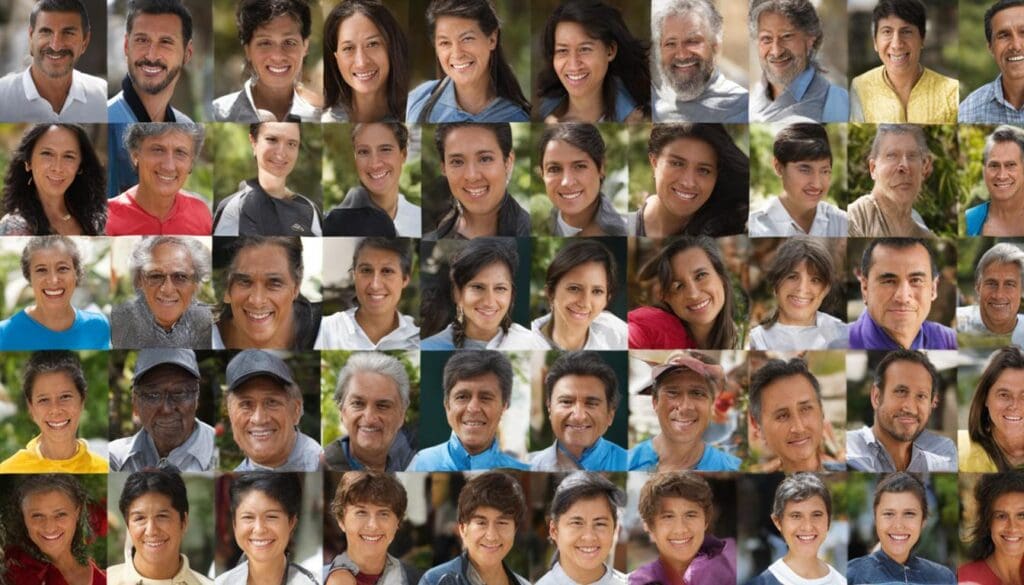
Describing Physical Appearance in Spanish
When it comes to describing physical appearance in Spanish, there are a variety of adjectives that can be used to paint a vivid picture. Adjectives such as “hermoso/a” (beautiful), “alto/a” (tall), and “delgado/a” (slim) are commonly used to describe different characteristics. It’s important to keep in mind that adjectives must agree in gender and number with the noun they are modifying.
For example, you might say “Ella es hermosa” (She is beautiful) to describe a woman’s appearance or “Él es alto” (He is tall) to describe a man’s height. Additionally, you could use phrases like “tener + noun + adjective” to describe specific features. For instance, “Él tiene los ojos hermosos” (He has beautiful eyes) or “Ella tiene el pelo largo” (She has long hair).
“Ella es hermosa” – She is beautiful
By utilizing descriptive words and phrases, you can effectively communicate someone’s physical appearance in Spanish. Whether you’re describing yourself, a friend, or a character in a story, these adjectives will help you paint a vibrant picture.
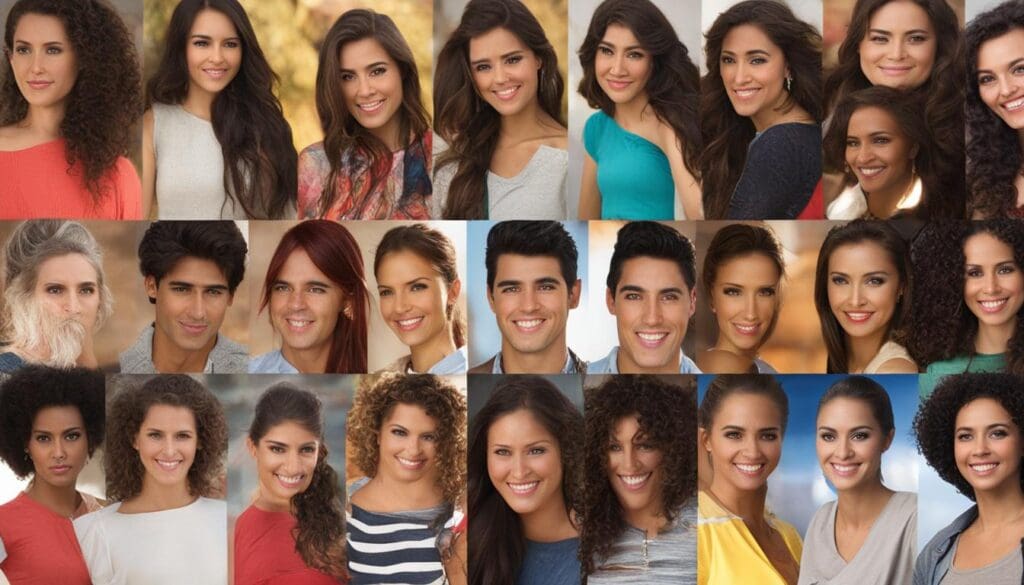
| Adjective | English Translation |
|---|---|
| hermoso/a | beautiful |
| alto/a | tall |
| delgado/a | slim |
| moreno/a | brunette |
| rubio/a | blonde |
| ojos verdes | green eyes |
Table: Spanish adjectives to describe a person’s physical appearance
Describing Personality in Spanish
When learning to describe a person in Spanish, it’s essential to have a rich vocabulary of adjectives that can accurately convey their personality traits. By using the right words, you can paint a vivid picture of someone’s character in your conversations or written descriptions. Here are some commonly used adjectives to describe personality in Spanish:
- Alegre: joyful
- Amable: friendly
- Inteligente: intelligent
- Tímido: shy
- Honesto: honest
- Generoso: generous
- Impaciente: impatient
- Organizado: organized
- Empático: empathetic
These adjectives can be combined with the verb “ser” to express permanent personality traits. For example, you can say “Él es amable” (He is friendly) or “Ella es inteligente” (She is intelligent). Remember that adjectives in Spanish must agree in gender and number with the noun they modify.
Using Adjectives to Describe Personality Traits
When describing someone’s personality, it’s helpful to provide specific examples or anecdotes that illustrate their character. This allows others to better understand the person you are describing and creates a more engaging and dynamic description. Here’s an example:
“María es una persona muy amable. Siempre está dispuesta a ayudar a los demás y tiene una sonrisa contagiosa. Es una amiga leal y siempre está ahí cuando la necesitas. Además, es muy inteligente y siempre tiene ideas creativas para resolver problemas.”
Practice Describing Personality
To improve your ability to describe personality in Spanish, try engaging in activities that provide opportunities to practice. You can write short paragraphs describing the personalities of your friends or family members, engage in role-playing exercises where you describe fictional characters, or have conversations with native Spanish speakers where you describe different personality traits.
Remember to pay attention to gender and number agreement when using adjectives to describe personality in Spanish. With practice and exposure to the language, you will become more confident and proficient in your ability to accurately describe people in Spanish.
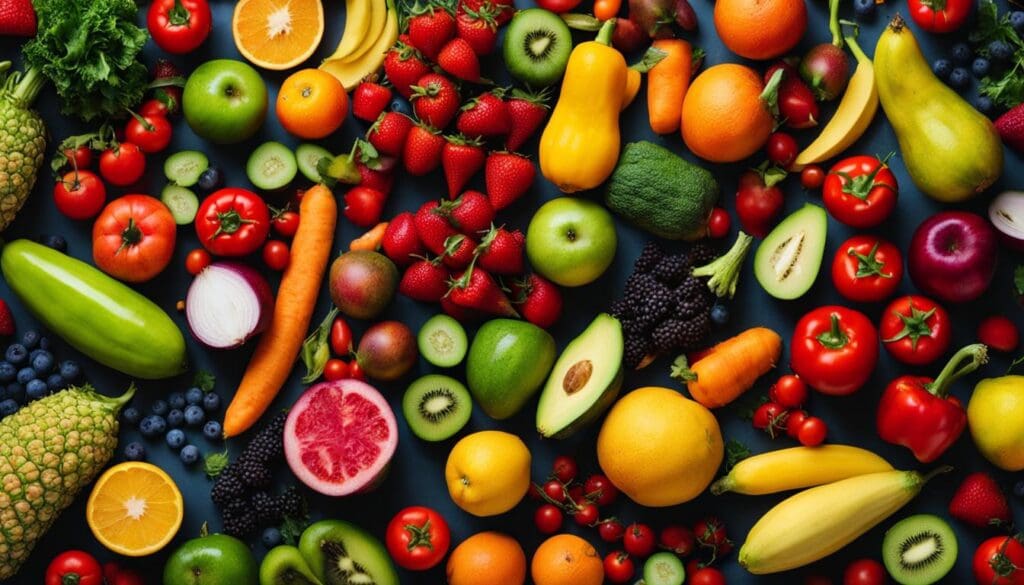
Describing Emotions in Spanish
When it comes to describing emotions in Spanish, there is a range of adjectives that can be used to accurately express how someone feels. These adjectives can be combined with the verb “estar” to indicate temporary emotional states. Understanding and using these words can greatly enhance your ability to communicate and connect with Spanish speakers on an emotional level.
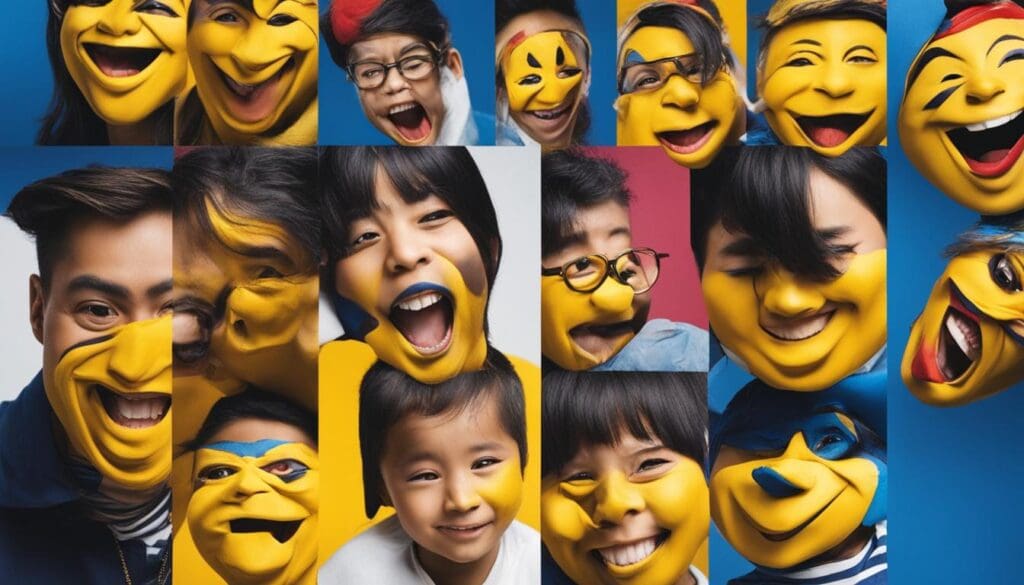
Some common adjectives used to describe emotions in Spanish include “feliz” (happy), “triste” (sad), “enojado/a” (angry), “nervioso/a” (nervous), and “cansado/a” (tired). It’s important to note that these adjectives must agree in gender and number with the noun they describe. For example, “Estoy feliz” (I am happy) or “Está enojado/a” (He/she is angry).
In addition to these basic emotions, there are also more specific adjectives that can be used to describe nuanced feelings. For example, “emocionado/a” (excited), “orgulloso/a” (proud), “asustado/a” (scared), and “sorprendido/a” (surprised) are all adjectives that can help to paint a more detailed picture of someone’s emotional state.
Describing Emotions in Spanish: Examples
“Hoy me siento muy feliz, tengo un nuevo trabajo.” (Today I feel very happy, I have a new job.)
“Ella está triste porque perdió a su mascota.” (She is sad because she lost her pet.)
“Estoy nervioso/a por mi examen de mañana.” (I am nervous about my exam tomorrow.)
By incorporating these descriptive adjectives into your Spanish vocabulary, you’ll be better equipped to express and understand the wide range of emotions that people experience. This will not only deepen your understanding of the language but also allow you to connect with Spanish speakers on a more personal level.
Using Adjectives with Ser and Estar
When describing a person in Spanish, adjectives play a crucial role in conveying important information about their physical appearance, personality, and emotions. It is essential to understand how to use adjectives with the verbs “ser” and “estar” to accurately describe a person’s qualities. While both verbs can be used with adjectives, their usage can result in different meanings.
Using Adjectives with Ser
The verb “ser” is used to express permanent characteristics of a person. When combined with adjectives, it provides information about a person’s essential qualities. For example, “Él es guapo” (He is handsome) describes a permanent physical attribute. Similarly, “Ella es inteligente” (She is intelligent) describes a permanent personality trait. When using adjectives with “ser,” it is important to ensure that they agree in gender and number with the noun being described.
Using Adjectives with Estar
The verb “estar,” on the other hand, is used to express temporary states or conditions. When combined with adjectives, it describes a person’s current condition or appearance. For instance, “Él está guapo” (He looks handsome) describes a temporary state of being handsome. Likewise, “Ella está feliz” (She is happy) expresses a temporary emotional state. Adjectives used with “estar” should also agree in gender and number with the noun they modify.
| Verb | Example | Meaning |
|---|---|---|
| Ser | Él es guapo | He is handsome (permanent) |
| Estar | Él está guapo | He looks handsome (temporary) |
Understanding the distinction between “ser” and “estar” when using adjectives to describe a person will help you accurately convey the intended meaning. Paying attention to the context and considering whether the characteristic or condition is permanent or temporary will guide you in choosing the appropriate verb.
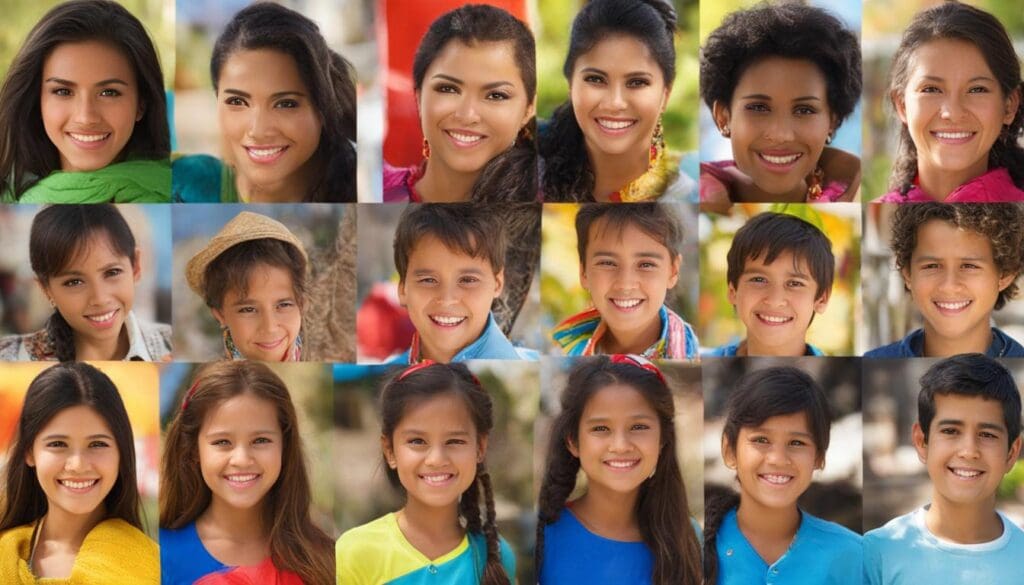
How to Practice Describing People in Spanish
Practicing how to describe people in Spanish is essential for developing your language skills. There are several enjoyable and effective activities you can engage in to enhance your abilities in this area.
Activity 1: Writing Descriptions
One way to practice describing people in Spanish is by writing descriptions of your family members or friends. Start by making a list of their physical appearance, personality traits, and preferences. Then, use the appropriate vocabulary and grammar structures to create detailed and accurate descriptions. This exercise will not only help you improve your writing skills but also reinforce your knowledge of adjectives and verb usage.
Activity 2: Dialogues and Role-playing
Practicing dialogues with a partner or engaging in role-playing exercises is another effective way to practice describing people. Take turns playing different characters and describe their physical appearance, personality, and emotions using the appropriate adjectives and verbs. This activity will not only improve your speaking skills but also enhance your ability to think on your feet and respond in real-time.
Activity 3: Watching Spanish-language Media
Watching Spanish-language movies or TV shows and describing the characters can be both enjoyable and educational. Pay attention to the characters’ physical appearance, personality traits, and emotions, and try to describe them in Spanish. This activity will help you expand your vocabulary, improve your listening skills, and provide you with real-life examples of how to describe people in Spanish.
| Activity | Description |
|---|---|
| Writing Descriptions | Write descriptions of family members or friends to practice using adjectives and verb usage. |
| Dialogues and Role-playing | Practice describing people through dialogues and role-playing exercises. |
| Watching Spanish-language Media | Watch Spanish-language movies or TV shows and describe the characters in Spanish. |
By regularly engaging in these activities, you will gain confidence in your ability to describe people in Spanish. Remember to focus on using the correct adjectives, verbs, and grammar structures to accurately convey the physical appearance, personality traits, and emotions of individuals. Practice is key to mastering any language skill, so make sure to dedicate time to honing your descriptive abilities.
Conclusion
In conclusion, describing a person in Spanish requires understanding the verbs, adjectives, and correct usage of verbs like “ser” and “estar.” By learning the appropriate vocabulary and grammar structures, you will be able to effectively describe physical appearance, personality traits, and emotions in Spanish. It’s important to remember that adjectives must agree in gender and number with the noun being described.
To practice and improve your Spanish descriptions, consider engaging in various activities such as writing descriptions of family members or friends, practicing dialogues with a partner, or participating in role-playing exercises. Additionally, watching Spanish-language movies or TV shows and describing the characters can be a fun and effective way to enhance your language skills.
Start your Spanish immersion experience with Vamos Academy, your Malaga Spanish School. Whether you prefer in-person classes or online lessons, Vamos Academy offers a comprehensive curriculum that will help you master the art of describing people in Spanish. With dedicated
So now you know how to describe a person in Spanish, including yourself!


